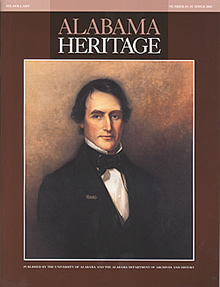|
On the cover: Portrait of William R. King, by an unidentified artist, ca. 1840. Oil on Canvas, 30 by 26 inches. (Selma-Dallas County Public Library, Selma.)
|
FEATURE ABSTRACTS
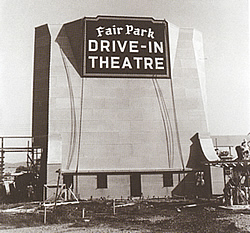 The Fair Park,
The Fair Park,one of Birmingham's earliest drive-ins
(Birmingham Public Library Archives)
A Light at the Edge of Town: Drive-In Movie Theaters in Alabama
By Aaron Welborn
At one time, Alabama was home to 96 drive-in movie theaters. As of 1990, that number had dwindled to three. Today, a total of ten Alabama drive-ins are open for business. Such a small increase might be hard to appreciate if you didn't know that, only a decade ago, drive-ins appeared to be all but extinct. But recently, the nationwide decline of drive-in theaters that began in the 1950s has actually started to reverse. Drive-ins are coming back, if only gradually and in just a few pockets around the country-including Alabama. Such a development seems strange. Drive-ins are the product of a different time, a different America. How, then, does one explain their resurgence? To answer that question, one needs to return to their history, beginning in the 1930s, when the drive-in got off to its inauspicious start.
By Aaron Welborn
At one time, Alabama was home to 96 drive-in movie theaters. As of 1990, that number had dwindled to three. Today, a total of ten Alabama drive-ins are open for business. Such a small increase might be hard to appreciate if you didn't know that, only a decade ago, drive-ins appeared to be all but extinct. But recently, the nationwide decline of drive-in theaters that began in the 1950s has actually started to reverse. Drive-ins are coming back, if only gradually and in just a few pockets around the country-including Alabama. Such a development seems strange. Drive-ins are the product of a different time, a different America. How, then, does one explain their resurgence? To answer that question, one needs to return to their history, beginning in the 1930s, when the drive-in got off to its inauspicious start.
Additional Information:
About the Author
Aaron Welborn is assistant editor of Alabama Heritage. A native of Georgia, where he visited his first drive-in, he now makes his home in Tuscaloosa, where he is pursuing a Master of Fine Arts degree in Creative Writing at the University of Alabama. He also serves as managing editor of Black Warrior Review, a nationally acclaimed literary magazine published by the university. He wishes to thank Steve Kimble for his help in gathering research for this article, and Robert Welborn for taking his son to the Starlight Drive-in in Atlanta to see Night of the Living Dead those many years ago and unwittingly sparking an obsession.
- Sanders, Don and Susan. The American Drive-In Movie Theatre (Moterbooks International, 1997).
- Segrave, Kelly. Drive-in Theaters: A History from their Inception in 1933 (McFarland & Co., 1992).
- Drive-ins.com
- The Drive-in Exchange, Limited
About the Author
Aaron Welborn is assistant editor of Alabama Heritage. A native of Georgia, where he visited his first drive-in, he now makes his home in Tuscaloosa, where he is pursuing a Master of Fine Arts degree in Creative Writing at the University of Alabama. He also serves as managing editor of Black Warrior Review, a nationally acclaimed literary magazine published by the university. He wishes to thank Steve Kimble for his help in gathering research for this article, and Robert Welborn for taking his son to the Starlight Drive-in in Atlanta to see Night of the Living Dead those many years ago and unwittingly sparking an obsession.
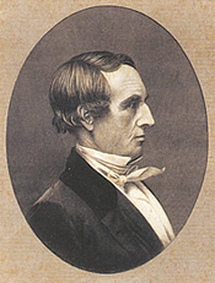 William R. King,
William R. King,engraving by W.H. Dougal
(Daniel Fate Brooks)
The Faces of William Rufus King
By Daniel Fate Brooks
This year marks the 150th anniversary of the death of William Rufus King, the only Alabamian ever to hold a United States executive office, as well as the only official ever to take the oath of office on foreign soil. During his lifetime, William Rufus King was a household name. But relatively few Alabamians remember him today, or what he did. Historian Daniel Fate Brooks recalls King's life as one of America's most admired politicians of the nineteenth century, and one of Alabama's earliest celebrities, whose handsome good looks and worldly sophistication won him many friends and admirers. But King is perhaps best remembered for taking the oath of office as Franklin Pierce's vice president while living in Havana, Cuba, where he was hoping to recover from tuberculosis. His term lasted only a few short weeks, before he sailed home for Selma, the town he named, and died, having never performed a single official act as Vice President.
By Daniel Fate Brooks
This year marks the 150th anniversary of the death of William Rufus King, the only Alabamian ever to hold a United States executive office, as well as the only official ever to take the oath of office on foreign soil. During his lifetime, William Rufus King was a household name. But relatively few Alabamians remember him today, or what he did. Historian Daniel Fate Brooks recalls King's life as one of America's most admired politicians of the nineteenth century, and one of Alabama's earliest celebrities, whose handsome good looks and worldly sophistication won him many friends and admirers. But King is perhaps best remembered for taking the oath of office as Franklin Pierce's vice president while living in Havana, Cuba, where he was hoping to recover from tuberculosis. His term lasted only a few short weeks, before he sailed home for Selma, the town he named, and died, having never performed a single official act as Vice President.
Additional Information
Multimedia:
About the Author
Daniel Fate Brooks is the Director of Arlington, Birmingham's house museum, and an adjunct instructor at Samford University. He holds B.A. and M.A. degrees in history from Samford and is past president of the Alabama Historical Association. In 1994 he was curator of the Birmingham Museum of Art exhibition, Made in Alabama, A State Legacy and an author for the exhibition catalogue.
For over twenty years, Brooks, a native of Camden, has researched the life of William Rufus King. He has authored a chapter on King in The Vice Presidents: A Biographical Dictionary (1998), and in 2001 traveled to Cuba to complete research for a forthcoming article in the Alabama Review and a larger King biography.
Several people have earned the author's gratitude for this article, including C. Richard Chartrand, Laurence B. Tipton Jr., Catherine Tipton Harper, Jean Martin, Becky Cothran Nichols, Robert Cason, Elizabeth Wells, Patti Topazi Studdard, and Linda B. Walker.
- Brooks, Daniel Fate. "The Road to Ariadne: Remembering the Inauguration of William Rufus King," forthcoming article, Alabama Review
- Purcell, L. Edward, ed. The Vice Presidents: A Biographical Dictionary. (New York: Facts on File, Inc., 1998), pp. 122-128.
Multimedia:
About the Author
Daniel Fate Brooks is the Director of Arlington, Birmingham's house museum, and an adjunct instructor at Samford University. He holds B.A. and M.A. degrees in history from Samford and is past president of the Alabama Historical Association. In 1994 he was curator of the Birmingham Museum of Art exhibition, Made in Alabama, A State Legacy and an author for the exhibition catalogue.
For over twenty years, Brooks, a native of Camden, has researched the life of William Rufus King. He has authored a chapter on King in The Vice Presidents: A Biographical Dictionary (1998), and in 2001 traveled to Cuba to complete research for a forthcoming article in the Alabama Review and a larger King biography.
Several people have earned the author's gratitude for this article, including C. Richard Chartrand, Laurence B. Tipton Jr., Catherine Tipton Harper, Jean Martin, Becky Cothran Nichols, Robert Cason, Elizabeth Wells, Patti Topazi Studdard, and Linda B. Walker.
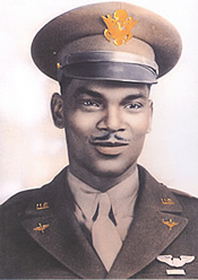 Sherman White, Jr
Sherman White, Jr(James White)
Patriots of Color: An Alabama Family in the Good War
By Wesley Phillips Newton
Before the Civil Rights Movement, African Americans faced another challenge: World War II.
If you had asked Sherman and Nettie White, they would have told you they were no different from thousands of other families in Montgomery whose children went off to WWII. In each of their three children, the Whites had instilled a strong sense of personal responsibility and civic duty. But there was one essential difference. The children of Sherman and Nettie White were defending a democratic society that, at that time, was badly flawed with regards to the acceptance and treatment of their race. This fact would become even clearer after the war. Wesley Phillips Newton tells the story of one African American family who risked everything for a better life and a better world. Their dedication brought them disaster, pain, and took one of their own flesh and blood. Yet to them, it was a necessary step towards a more equal life.
By Wesley Phillips Newton
Before the Civil Rights Movement, African Americans faced another challenge: World War II.
If you had asked Sherman and Nettie White, they would have told you they were no different from thousands of other families in Montgomery whose children went off to WWII. In each of their three children, the Whites had instilled a strong sense of personal responsibility and civic duty. But there was one essential difference. The children of Sherman and Nettie White were defending a democratic society that, at that time, was badly flawed with regards to the acceptance and treatment of their race. This fact would become even clearer after the war. Wesley Phillips Newton tells the story of one African American family who risked everything for a better life and a better world. Their dedication brought them disaster, pain, and took one of their own flesh and blood. Yet to them, it was a necessary step towards a more equal life.
Additional Information
About the Author
Wesley Phillips Newton is professor emeritus of history, Auburn University. An Army veteran of World War II, he is a native of Montgomery and resides there in retirement. He first encountered the story of Sherman White Jr. and his family while doing research for Montgomery in the Good War: Portrait of an Alabama City, 1939-1946 (University of Alabama Press, 2000). James, Joetta, and Samson White graciously provided essential photographs, documents, and interviews for this article.
- Davis, Benjamin O. B.O. Davis, Jr., American (Smithsonian Institution Press, 1991).
- Dryden, Charles W. A-Train: Memoirs of a Tuskegee Airman (University of Alabama Press, 1997).
- Ennels, Jerome A. and Wesley Phillips Newton. The Wisdom of Eagles: A History of Maxwell Air Force Base (River City Press, 2002).
- Jakeman, Robert J. The Divided Skies (University of Alabama Press, 1992).
- Sander, Sandy. Segregated Skies (Smithsonian Institution Press, 1992).
- Tuskegee Airmen 1 of 2 (video)
- Tuskegee Airmen 2 of 2 (video)
- Tuskegee Airmen War Bond Poster
- Tuskegee Airmen Being Briefed
About the Author
Wesley Phillips Newton is professor emeritus of history, Auburn University. An Army veteran of World War II, he is a native of Montgomery and resides there in retirement. He first encountered the story of Sherman White Jr. and his family while doing research for Montgomery in the Good War: Portrait of an Alabama City, 1939-1946 (University of Alabama Press, 2000). James, Joetta, and Samson White graciously provided essential photographs, documents, and interviews for this article.
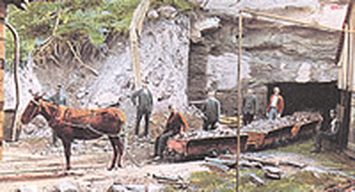 Miners outside the Brookside Mine in Birmingham
Miners outside the Brookside Mine in Birmingham(Adolphe Selige Publishing Co., St Louis-Leipzig)
Digging "Stone Coal"
By Whitney R. Telle
With the possible exception of cotton, no other commodity has so shaped the economic and cultural destiny of Alabama as the mile-thick wedge of coal under its rugged hills and hollows. For ages, this invisible treasure lay undisturbed beneath the state's landscape before anyone recognized its value. But the secret could not remained buried forever. Whitney R. Telle recounts the history of early coal mining in Alabama, and explains how the discovery of a simple fossil fuel rapidly changed the way people lived and worked throughout the state. From the enterprising industrialists who made fortunes in mining, to rowdy flatboatmen who transported coal downriver, to black and white laborers who risked death in the mines, the story of digging "stone coal" is the story of Alabama in the making.
By Whitney R. Telle
With the possible exception of cotton, no other commodity has so shaped the economic and cultural destiny of Alabama as the mile-thick wedge of coal under its rugged hills and hollows. For ages, this invisible treasure lay undisturbed beneath the state's landscape before anyone recognized its value. But the secret could not remained buried forever. Whitney R. Telle recounts the history of early coal mining in Alabama, and explains how the discovery of a simple fossil fuel rapidly changed the way people lived and worked throughout the state. From the enterprising industrialists who made fortunes in mining, to rowdy flatboatmen who transported coal downriver, to black and white laborers who risked death in the mines, the story of digging "stone coal" is the story of Alabama in the making.
Additional Information
Although difficult to locate even in reprint, the following sources are recommended for additional information:
About the Author
Whitney Telle is a consulting geologist living in Northport, Alabama. He holds a bachelor's and master's degree in geology from the University of Alabama. Mr. Telle has worked for many years with Alabama's coal mining industry as well as serving as a researcher with the University's School of Mines and Energy Development. He is currently involved in the exploration of Alabama's vast coalbed methane resources.
Although difficult to locate even in reprint, the following sources are recommended for additional information:
- Armes, Ethel. The Stroy of Coal and Iron in Alabama (Cambridge, MA: Cambridge University Press, 1910).
- Brown, Virginia Pounds and Jane Porter Nabers. Mary Gordon Duffee's Sketches of Alabama (Tuscaloosa, AL: University of Alabama Press, 1970).
- Maps mentioned in this article, as well as numerous other coal, geological and historical maps of Alabama may be viewed online.
- Coal Mining
- Little Cahaba Iron Works
- Michael Tuomy
- Mining Labor
- Sloss Furnaces
- Tennessee Coal, Iron and Railroad (TCI)
- Birmingham Coal Mine, 1908
- Louisville and Nashville Train Depot in Mobile
- Slope Mine in Jefferson County
- William Phineas Browne
About the Author
Whitney Telle is a consulting geologist living in Northport, Alabama. He holds a bachelor's and master's degree in geology from the University of Alabama. Mr. Telle has worked for many years with Alabama's coal mining industry as well as serving as a researcher with the University's School of Mines and Energy Development. He is currently involved in the exploration of Alabama's vast coalbed methane resources.
DEPARTMENT ABSTRACTS
Southern Folkways
Those Jugs with the Frightful Mugs
By Jaena Hollingsworth
Face jugs are unique examples of folk culture: ceramic jugs with glaring eyes, flared nostrils, and bared teeth, they represent a fusion of European and African techniques. Their functional use is known--they were often used to carry water to thirsty field hands--but the meaning of their intriguing form remains a mystery. Regardless of their original purpose, these jugs have become sought-after pieces of folk art.
About the Author
Jaena Hollingsworth is an Editorial Assistant at Alabama Heritage.
Those Jugs with the Frightful Mugs
By Jaena Hollingsworth
Face jugs are unique examples of folk culture: ceramic jugs with glaring eyes, flared nostrils, and bared teeth, they represent a fusion of European and African techniques. Their functional use is known--they were often used to carry water to thirsty field hands--but the meaning of their intriguing form remains a mystery. Regardless of their original purpose, these jugs have become sought-after pieces of folk art.
About the Author
Jaena Hollingsworth is an Editorial Assistant at Alabama Heritage.
Recollections
Lem Johns: That Day in Dallas
By Jack Owens
Lem Johns, a Birmingham native and member of the Secret Service, was present in Dallas on the day President John F. Kennedy was shot. As a witness of the events of November 22, 1963, he was an observer of the major events of that day--the aftermath of the shooting, the loading of the coffin onto Air Force One, the swearing in of Lyndon Johnson. This is the story of one man's proximity to history-making events.
About the Author
Jack Owens is a writer and retired FBI agent living in Birmingham.
Lem Johns: That Day in Dallas
By Jack Owens
Lem Johns, a Birmingham native and member of the Secret Service, was present in Dallas on the day President John F. Kennedy was shot. As a witness of the events of November 22, 1963, he was an observer of the major events of that day--the aftermath of the shooting, the loading of the coffin onto Air Force One, the swearing in of Lyndon Johnson. This is the story of one man's proximity to history-making events.
About the Author
Jack Owens is a writer and retired FBI agent living in Birmingham.
Southern Architecture and Preservation
The "Mockingbird" Courthouse
By Delos D. Hughes
Boosted to fame by hometown writer Harper Lee's To Kill a Mockingbird, the Monroe County Courthouse is a unique architectural work in its own right.
Additional Information
The following articles in the Encyclopedia of Alabama will also be of interest:
Multimedia:
About the Author
Delos D. Hughes is Emeritus Professor of Politics at Washington and Lee University and divides his time between Lexington, Virginia and his hometown, Auburn, Alabama.
The "Mockingbird" Courthouse
By Delos D. Hughes
Boosted to fame by hometown writer Harper Lee's To Kill a Mockingbird, the Monroe County Courthouse is a unique architectural work in its own right.
Additional Information
The following articles in the Encyclopedia of Alabama will also be of interest:
Multimedia:
- Old Monroe County Courthouse
- Scottsboro Trial
- To Kill a Mockingbird Film Set
- To Kill a Mockingbird Play in Monroeville
About the Author
Delos D. Hughes is Emeritus Professor of Politics at Washington and Lee University and divides his time between Lexington, Virginia and his hometown, Auburn, Alabama.
Alabama Treasures
The "Great Magazine Explosion" of '65
By Todd Kreamer
On May 25, 1865, at 2:15 P.M., an explosion shook the city of Mobile. Known as the "Great Mobile Magazine Explosion," this tragedy remains the Port City's greatest disaster to date. Only one photograph remains showing the devastation left in the wake of the explosion, documenting the greatest damage inflicted on Mobile during the Civil War period.
About the Author
Todd A. Kreamer is Curator of History for The Museum of Mobile.
The "Great Magazine Explosion" of '65
By Todd Kreamer
On May 25, 1865, at 2:15 P.M., an explosion shook the city of Mobile. Known as the "Great Mobile Magazine Explosion," this tragedy remains the Port City's greatest disaster to date. Only one photograph remains showing the devastation left in the wake of the explosion, documenting the greatest damage inflicted on Mobile during the Civil War period.
About the Author
Todd A. Kreamer is Curator of History for The Museum of Mobile.
 Ilex vomitoria
Ilex vomitoria(L.J. Davenport)
Nature Journal
The Black Drink
By L. J. Davenport
The "black drink," derived from the leaves of the Ilex vomitoria, was an important part of the hospitality practices of Native American tribes in Alabama. L.J. Davenport traces its history and eventual decline in popularity among Alabamians.
Additional Information
The following articles in the Encyclopedia of Alabama will also be of interest:
About the Author
Larry Davenport is a professor of biology at Samford University, Birmingham.
The Black Drink
By L. J. Davenport
The "black drink," derived from the leaves of the Ilex vomitoria, was an important part of the hospitality practices of Native American tribes in Alabama. L.J. Davenport traces its history and eventual decline in popularity among Alabamians.
Additional Information
The following articles in the Encyclopedia of Alabama will also be of interest:
About the Author
Larry Davenport is a professor of biology at Samford University, Birmingham.
